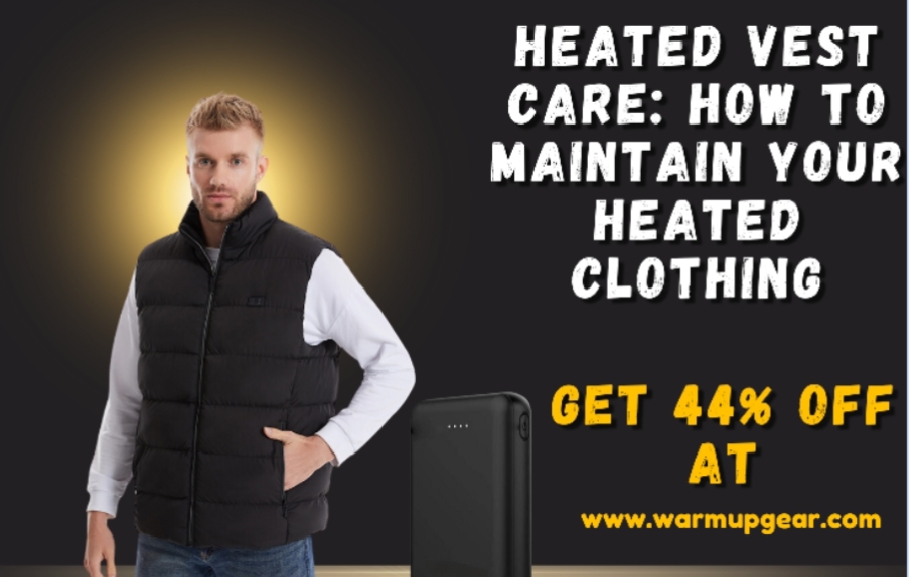As winter approaches, many of us are looking for effective ways to stay warm. Heated vests have become increasingly popular, offering an innovative solution to combat the cold. However, a common concern arises: Are heated vests safe to use? In this blog post, we’ll delve into the safety aspects of heated vests, covering everything you need to know before investing in this winter gear.
What is a Heated Vest?
A heated vest is a type of clothing equipped with built-in heating elements, usually powered by rechargeable batteries. These vests are designed to provide targeted warmth to help keep you comfortable in cold weather. They can be used for various activities, from outdoor adventures to everyday errands.
Safety Features of Heated Vests
When considering the safety of heated vests, it’s essential to understand the built-in features designed to ensure user safety:
- Overheat Protection: Most heated vests come with built-in sensors that automatically shut off the heating elements if they reach unsafe temperatures. This feature helps prevent burns and overheating.
- Multiple Heat Settings: Many models offer adjustable heat settings, allowing users to choose their preferred warmth level. Lower settings use less power and generate less heat, reducing the risk of overheating.
- Quality Materials: Reputable manufacturers use high-quality materials designed to withstand wear and tear. Look for vests made from durable, fire-resistant fabrics to enhance safety.
- Battery Safety: The batteries used in heated vests are typically lithium-ion, which are safe for use when handled properly. Many vests feature removable batteries, allowing for easy charging and replacement without risk.
Proper Usage Guidelines
To ensure the safe use of your heated vest, consider the following guidelines:
Follow Manufacturer Instructions: Always read and adhere to the manufacturer’s guidelines for usage, washing, and charging.
- Avoid Excessive Moisture: Heated vests should not be submerged in water. While many are water-resistant, it’s crucial to avoid excessive moisture that could damage the heating elements.
- Do Not Alter the Vest: Avoid modifying the vest or its components. This can compromise safety features and lead to malfunction.
- Monitor Battery Levels: Keep an eye on the battery level while using the vest. If the battery is low, recharge it before continuing to use the vest.
Common Concerns Addressed
- 1. Can Heated Vests Cause Burns? When used correctly, heated vests are designed to be safe. However, using the vest at the highest setting for an extended period may lead to discomfort or minor burns. Always start with lower settings and gradually increase the heat as needed.
- 2. Are They Safe for Children and Pets?
Heated vests designed for adults may not be suitable for children or pets due to the risk of overheating. If purchasing for younger users, look for models specifically designed for children with appropriate safety features.
- 3. Can I Wear a Heated Vest While Sleeping? It is generally not recommended to wear heated vests while sleeping, as you may not be able to monitor the heat settings, increasing the risk of overheating.
Conclusion
Heated vests can be a safe and effective solution for staying warm during winter, provided you choose a reputable brand and follow the safety guidelines. With advancements in technology, these vests are designed with multiple safety features to ensure user comfort and security.
Before making a purchase, do your research, read reviews, and consider your specific needs. A heated vest can be a fantastic addition to your winter wardrobe, allowing you to enjoy outdoor activities without the chill. Stay warm and safe this winter!
FAQs:
1. What is a heated vest?
A heated vest is a garment equipped with built-in heating elements that use rechargeable batteries to provide warmth. They are designed to keep you comfortable in cold weather by delivering targeted heat to your core and back.
2. Are heated vests safe to use?
Yes, heated vests are generally safe when used according to the manufacturer’s instructions. They come with safety features like overheat protection and adjustable heat settings to minimize risks.
3. What safety features should I look for in a heated vest?
- When choosing a heated vest, look for:
- Overheat protection to prevent burns.
- Multiple heat settings for customizable warmth.
- Quality materials that resist wear and tear.
- Removable batteries for safe charging.
4. Can heated vests cause burns or injuries?
When used properly, heated vests are safe. However, using the highest heat setting for an extended time can lead to discomfort or minor burns. It’s advisable to start with lower settings and increase as needed.
5. Are heated vests suitable for children and pets?
Heated vests designed for adults may not be safe for children or pets. If you want to purchase one for a child, look for models specifically designed for younger users with appropriate safety features.

